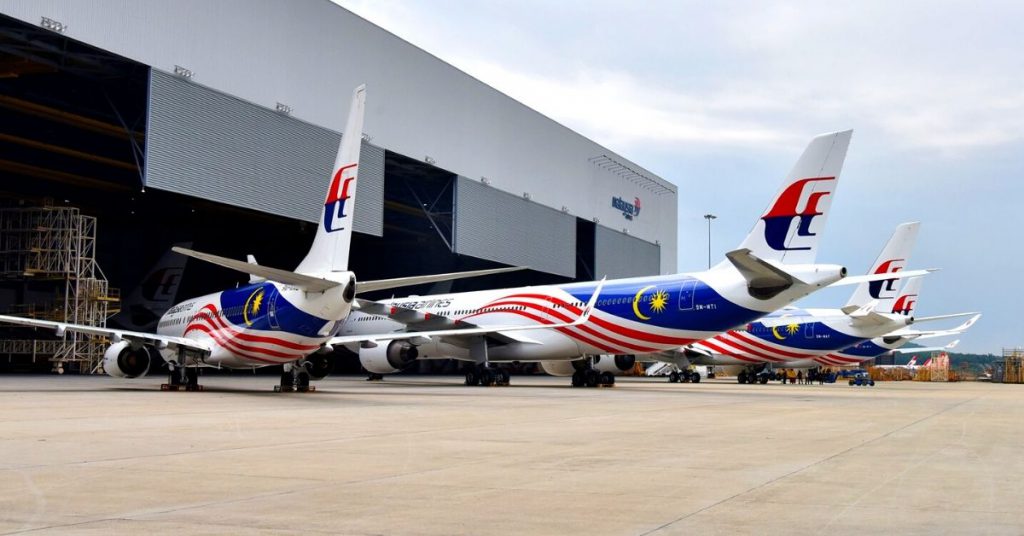Malaysia Airlines hasn’t been doing well lately.
As of late 2018, it was reported that the company’s liabilities were slightly below RM5.5 billion.
On October 6 this year, its RM16 billion worth of debt urged the airline to announce an urgent restructuring.
Khazanah Nasional Berhad is a Malaysian sovereign wealth fund company who wholly owns the airline.
It was reported that Khazanah would stop pumping funds into the group and was ready to let go of the airline if it failed to restructure from its ongoing debt, which was conceived in 2014.
As a result, the airline group may decide to execute Plan B by pooling funds into Firefly instead, the low-cost airline that is fully owned by Malaysian Airlines Group (MAG).
There was also news going around that Malaysia Airlines was under the threat of liquidation.
However, it has since clarified that this does not apply to it, but to its former now-defunct entity Malaysian Airline System Berhad (MAS).
This still leaves the question of how it’ll pull itself out of its current debt though.
While the answer to that is yet to be known, we decided to take a look at how its past losses were resolved.
They Were Founded In Singapore
Malaysia Airlines got its start as Malayan Airways Limited, which was founded in Singapore in the 1930s and flew its first commercial flight in 1947.
Some time in the 1970s, the Singapore government wanted to develop the airline’s international routes.
But the Malaysian government preferred to develop its domestic network first, before going regional and eventually international.
Their differing directions caused the two to divert paths and split its assets between MAS and Singapore Airlines.
They’ve Suffered Multiple Losses Since 1997
A little before the Asian Financial Crisis in 1997, MAS suffered losses in the billions for roughly five years.
One of the damage control efforts was to discontinue unprofitable routes out of Malaysia. Namely, routes to Brussels, Darwin, Madrid, Munich and Vancouver.
MAS was able to recover from its losses in 2003 and even profit from its restructuring.

But come 2005, it suffered another period of unprofitability due to rising fuel prices, aircraft maintenance, staff costs, handling and landing fees, amongst others.
By 2011, MAS recorded a net loss of RM2.52 billion, the largest in the company’s history due to rising fuel costs and mismanagement.
A major restructuring in that year brought along newly-appointed CEO, Ahmad Jauhari Yahya.
Discontinuing unprofitable routes was once again one of the first initiatives to cover their losses.
MAS managed to pick up profits in 2013 and became a member of the Oneworld Alliance, a leading global airline alliance.
Disaster Struck In 2014
In 2014, MAS struggled to compete with AirAsia and saw another loss in its first quarter.
Soon after, the disappearance of MH370 brought a loss of RM307.04 million, which represented a 75% increase over losses from the second-quarter of 2013.
In August 2014, the company’s stock trading was temporarily suspended when Khazanah and a Malaysian state-run investment arm requested that MAS’s BOD either buyback or cancel stock of other shareholders.
Khazanah, who only owned slightly over 60% of the company at the time, announced that it would spend RM1.38 billion to compensate minority shareholders.
Later that same month, Khazanah released a report, Rebuilding a National Icon: The MAS Recovery Plan, outlining a restructuring plan for MAS.

It also included their process of completing the takeover of the company, laying off about 30% (roughly 6,000 staff) of MAS’s workforce, and shrinking its routes to focus on regional destinations.
MAS was delisted from Malaysia’s stock exchange by the end of 2014 and rebranded to Malaysia Airlines Berhad (MAB) by 2015.
The new company saw a heavily reduced workforce and adjusted route network focusing on Asia under its newly appointed CEO, Christoph Mueller.
In April 2017, Malaysia Airlines announced that its entire fleet will be tracked by satellites, the first carrier in airline history to do such a thing.
This would allow it to identify planes deviating from a flight path more quickly, potentially preventing tragic incidents from repeating themselves.
Toughing It Out Through Turbulent Times
Flash forward back to this day, where the airline has kept its aircraft flying and cargo terminals busy amidst the pandemic.
Currently, MAS is conducting a search & repatriation mission, transporting stranded citizens back to their home countries during the RMCO and CMCO in certain states.
The situation has opened opportunities for the carrier to fly to new cities outside its usual network.
They include international destinations across Asia, the Middle East, Europe and even parts of Africa where commercial flights are limited.
Meanwhile, its sister company, MAB Kargo Sdn Bhd has worked closely with governments and NGOs to transport over 2,000 tonnes of medical equipment and disaster-relief aid worldwide.

At this point in time, there’s no telling what will happen to Malaysian Airlines.
Seeing that they’ve managed to pick themselves back up after losses in the past, it would be a shame for Khazanah to give up on them this time around.
However, Daniel Wong, an aviation analyst at HLIB Research noted that Malaysia Airlines is not part of Khazanah’s core portfolio.
He implied that if the investment no longer made financial sense and if government approval was granted, Khazanah would be willing to part with its airline business.
While we do not doubt Malaysia Airlines is a pride to Malaysia as the national carrier has been around since 1947, we remain doubtful of Khazanah’s willingness and ability to sustain the continued losses of Malaysia Airlines. The losses of Malaysia Airlines may amount to RM1 billion per year.
Daniel Wong, aviation analyst at HLIB Research.
In line with that statement, it seems that Khazanah has good intentions if they were to go for the proposed Plan B.
This is because Firefly will receive the funding instead and become the next best affordable airline next to AirAsia.
Nonetheless, no doubt many Malaysians would feel some sadness if Malaysia Airlines’ current efforts fail to take off this time, which could mark the potential end of an iconic airline brand.
- You can learn more about Malaysian Airlines Berhad here.
- You can read more Malaysian airlines related articles here.
Featured Image Credit: Malaysian Airlines Berhad















